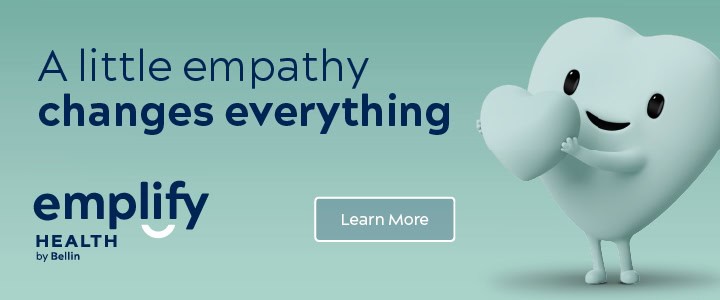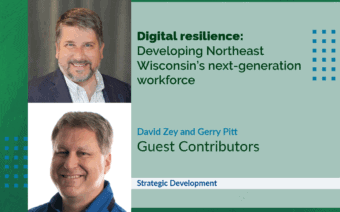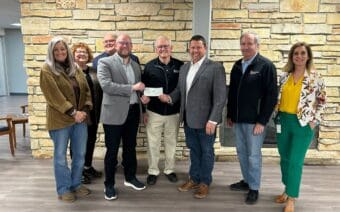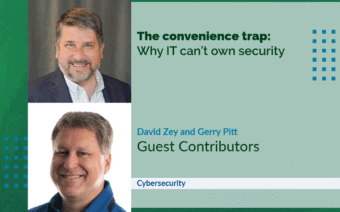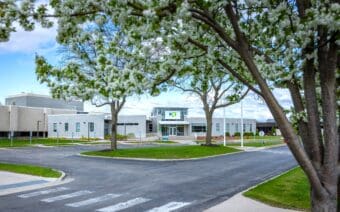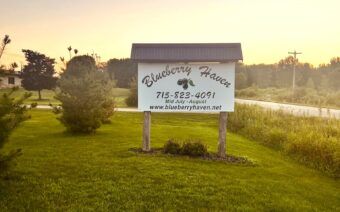
September 8, 2022
NORTHEAST WISCONSIN – Digital literacy is defined as having the skills needed to live, learn and work in a society where communication and access to information is increasingly done through digital technologies.
The NEW BOOST (Building Opportunities for Overlooked Sustainable Talent) Hidden Talent Project initiative, spearheaded by New North, is designed to help underrepresented populations obtain digital literacy skills that in turn assist them with entry/reentry into the workforce or improving their current employment situation.
“What we see is, as we continue to hear more organizations talking about their workforce needs, we see this as being very sustainable,” Rebecca Deschane, New North vice president of talent development, said. “It’s creating those opportunities for organizations to connect with people, and for those people to fill the workforce gaps that are necessary in order to be able to meet the demands.”
Deschane said New North is partnering with organizations that are already working with individuals with limited literacy skills or without digital literacy skills, to help them build their knowledge base.
“In the long run, it is going to help them as they build careers to be able to access the digital jobs of the 21st century and continue to build skill sets that are going to help them on career pathways,” she said.
The initiative is funded through a $1.6 million grant from the Wisconsin Department of Workforce Development made possible through the American Rescue Plan Act (ARPA) and Gov. Tony Evers’ Worker Advancement Initiative (WAI), which provides subsidized employment and skilled training opportunities to those seeking employment.
Matt Vailquette, executive director of the Bay Area Workforce Development Board (BAWDB), said the NEW BOOST collaboration ($588,000) is one of four WAI projects the BAWDB is funding with ARPA dollars.
Just last month, Bay Area announced its Hidden Talent Project at Fox Valley Technical College, which is helping Somali and Afghan refugees obtain commercial driving licenses.
“COMSA has (a grant) with the workforce training, and through our partnership, we will actually be able to partner with that organization,” Deschane said “We’re different programs, but… if they’re working with partners or individuals within that program that would also like to build digital literacy skills, they can refer them to us, and we’ll be able to connect them to a resource or a digital scope provider to help them build that out. They’ll be able to maximize that pathway toward a new opportunity.”
Partnerships
Deschane said workforce development today requires proactive efforts, and “BOOST” is a mechanism in which they can connect with people.
“Building opportunities for sustainable talent is about the outreach we’re going to do to connect with people who aren’t connected to traditional programs,” she said. “So they may be receiving resources from organizations that don’t necessarily track in the same way some of our traditional workforce development boards do.”
Deschane said success with those connections depends on the partnerships.
Those currently involved with NEW BOOST include the BAWDB, Abaxent, African Heritage, Inc., Literacy Green Bay, Fox Valley Literacy, Back to Basics Tutoring, We All Rise African American Resource Center and Casa ALBA Hispanic Resource Center.

Sabrina Robins (standing in green), a board member with African Heritage, Inc., said the involvement of community partners is critical in reaching underrepresented populations. Heather Graves Photo
“We intentionally partnered with African Heritage Inc., We All Rise, Casa ALBA and other cultural-serving organizations to help meet people where they are,” Deschane said. “It’s not about going out and issuing a notification and having people come to you. This is very intentional. How do we go out and meet people where they are, have a conversation to ask them what they need to be successful and then help connect them to those resources that are going to help them along their path?”
Deschane said one of the pillars of the program – a Workforce Development System, a digital hub of sorts – is currently being built, with an anticipated completion of Oct. 1.
“This grant is going to use technology to enable those learnings and those skillings, and we have the option to customize that to meet our regional needs,” she said.
Representatives from the initiative’s partners participated in a work session Aug. 16 at Northeast Wisconsin Technical College to help shape what that could and should look like.
“What we’re going through now is working with our partners to understand, what do you need? What are you already doing?” Deschane said. “How do we build a platform that isn’t cumbersome, that isn’t going to create barriers for our organization partners, to help them provide those resources, but then also give them information about how it can help them and enable them to be more efficient?”
Deschane said the hub will produce custom reporting, dashboard metrics, access to mentorship and cohort management features, integration of external websites and other platforms and a library of technology and onboarding support videos.
“It has technology that enables us to build a common curriculum to have integrations with existing resources to help organizations augment what they may already be doing or to build those resources they don’t have,” she said. “But it also gives us that opportunity to track what we are doing. How are we being successful? Where are the additional gaps, and how do we make sure we continue to create and enable opportunities that help reduce barriers and increase access to those resources and skilling?”
Sabrina Robins, a board member with African Heritage, Inc., said it’s essential organizations receive this training, so they can be competent when working with individuals coming to them for help.
“This program is boundary spanning, its organizational spanning and its culturally spanning,” she said. “That helps to address all those barriers and make us part of the system. This whole notion of being hidden – we don’t want folks there. And so once we have this program in place, how do we stay engaged so they don’t go back to be hidden? So, that this is not a one and done. This is a commitment, and it’s meant to be sustained for forever, as far as I’m concerned.”
Brian Leone Tracy, executive director of Fox Cities Literacy, said having the partners, the boots on the ground, being a part of the entire process will help organizations “sell it.”
“It’s both intimidating and exciting to be part of the entire process,” he said.
Deschane said meeting people where they are and expanding recruitment efforts can play a significant role in the success and implementation of talent initiatives involving underserved populations.
Regional impact
Deschane said the initiative will impact the region’s business community in a multitude of ways, including:
Help increase the pool of candidates with the digital literacy and workforce-readiness skills employers are looking for.Connect business partners with a talent pipeline that may have been previously disconnected from traditional recruitment strategies.Help facilitate new opportunities for business leaders to build partnerships with a broader range of community partners and create pathways to formalize previously informal networks.
Deschane said New North knows through a partnership with Microsoft that “digital scaling and digital equity is a gap we have in Northeast Wisconsin,” as more and more career opportunities – even foundational entry level jobs – have some sort of digital requirement to them.
“Helping individuals build those foundational digital literacy skills is going to help them reduce those barriers into some of the entry level programs, so that they can continue to advance and continue to grow their skills and then have that career advancement that’s also going to allow them to address equity gaps in wealth and wage disparities,” she said.
 Gourmet, on-the-go food options along Sturgeon Bay’s waterfront
Gourmet, on-the-go food options along Sturgeon Bay’s waterfront Catch us if you ‘cran’
Catch us if you ‘cran’

